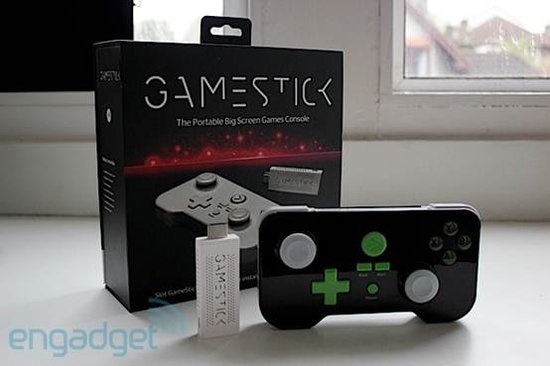<p style="text-align: justify">Many experts predicted that 2013 and 2014 would see widespread game console development for the Android. The Android platform has an extensive library of games and there are a multitude of new game consoles out. Despite this, none of the game consoles actually seem to have gained any traction within the market. Why not?</p>
<h2><strong>Why the Ouya Didn&#8217;t Capture the Market</strong></h2>
<p style="text-align: justify">If there was any game console that really drummed up interest, it was the Kickstarter-funded Ouya. At an incredible price point of $99, the Ouya appeared to be everything that anyone could want. It promised to be a developer friendly Android-based console.</p>
<p style="text-align: justify">Despite the initial hype, the Ouya almost seemed like a proposition that was doomed to failure from the very start; it simply promised too much. Though it still has a solid core of extremely devoted fans, many gamers and developers were skeptical from the beginning. Though the Ouya was eventually released, it went through many modifications and downgrades throughout the process.</p>
<p style="text-align: justify">The Ouya is actually a rather impressive bit of small technology; the problem wasn&#8217;t in the product but rather the promises that it had made. The campaign for the Ouya always just skirted the line of &#8220;too good to be true,&#8221; promising something that would be stylish, cheap and open. The initial design documents drastically changed because they were simply too ambitious and the core audience lost interest.</p>
<h2><strong>The Nvidia Shield May Have Just Been Too Bizarre</strong></h2>
<p style="text-align: justify">On the surface, the idea for the Nvidia Shield is fantastic: a high-quality, portable Android console that is controlled by a full-sized Android controller. All the pieces seem to be there: you have a small, high resolution display that you can put anywhere and you have all the comforts of gaming at home. So why did the Nvidia Shield fail?</p>
<p style="text-align: justify">Well, it was simply too strange. At $299, the Nvidia Shield is priced about on par with other portable game consoles. However, it comes in <em>two</em> parts: the screen and the controller. The controller is actually larger than the screen, and the screen can either be attached to the top of the controller or placed on a desk.</p>
<p style="text-align: justify">Compounding the issues, there weren&#8217;t very many Android games available that could properly utilize a traditional controller. While a fantastic proof of concept, the Nvidia Shield may have been unable to gain traction because it just wasn&#8217;t what people were looking for.</p>
<h2 style="text-align: justify"><strong>The GameStick Almost Hits the Mark</strong></h2>
<p style="text-align: justify">Out of all the indie game consoles, the Kickstarter-funded GameStick may have hit the closest to the mark. A simple, USB-like drive that attaches to a television and a small, portable controller, the GameStick immediately turns a television into an Android-accessible device. Extremely portable, the video game console competes directly against the Ouya and other eighth generation consoles.</p>
<p style="text-align: justify">The GameStick was held back slightly by delays in production, an issue that is very common to Kickstarter-based products. Though the GameStick got favorable reviews throughout the indie gaming market, the core issue was its lack of a library. As of 2014, GameStick still boasts a very limited selection of games. Even worse, the GameStick was not equipped with a CPU that can play the most recent Android games, effectively crippling the system.</p>
<h2 style="text-align: justify"><strong>What&#8217;s Holding the Android Back?</strong></h2>
<p style="text-align: justify">The Android game consoles all appear to be held back by very similar issues. The technology simply isn&#8217;t fantastic even though the consoles are inexpensive, the consoles themselves are unfamiliar to the broader gaming market and the consoles tend to have a limited library of games. In part, this is because developers need to use simpler technology to ensure that they have a competitive price point with the console markets.</p>
<p style="text-align: justify">&#8220;The Android can be utilized to a much fuller extent than it is currently, and developers know this,&#8221; according to Jason Hope, Scottsdale entrepreneur (http://sens.org/outreach/outreach-blog/release-internet-entrepreneur-jason-hope-pledges-half-million-dollars-sens). &#8220;It simply remains to be seen whether Android users will be willing to pay a higher price point for that functionality.&#8221;</p>
<p style="text-align: justify">To truly succeed, a game console would need to properly leverage the extensive line up of Android games and offer the ability to run the newest games. Though the Android market has not yet seen a console that can fulfill these needs, it may not be long before it is created. The proliferation of Android consoles shows that there is an interest in the device, but simply that the perfect device hasn&#8217;t yet been created.</p>
<p style="text-align: justify">About Author: Amy Taylor is a business and technology writer. Amy began her career as a small business owner in Phoenix, AZ. She enjoys writing about business technology trends. When she isn’t writing, she enjoys hiking with her Alaskan Malamute, Sam.</p>

Gaming On The Droid? Why Won’t The Ouya, Shield Or GameStick Gain Traction?
